This post may contain affiliate links. At no cost to you, purchases made through these links may result in a small commission for Traveling Transylvania. We never recommend products that we don’t know and trust. Thank you for your continued support!
Romania, a land of vibrant culture, breath-taking landscapes, and rich history, has a unique charm that beckons travelers from across the globe. While exploring the urban vibrancy of Bucharest or discovering all there is to do in Transylvania, one of the best ways to soak in the true essence of Romania is by hitting the road. Yet, driving in a foreign country can often pose its own set of challenges. This is especially true for Romania, where the charm of the open road comes with a distinct set of rules, conditions, and requirements – and internationally notorious drivers.
From major highways to quaint village roads, this guide is designed to equip you with all the necessary knowledge you need to embark on an unforgettable Romanian road trip. So buckle up, and get ready to discover the beauty, the peculiarities, and the challenges of driving in Romania.
- Driving in Romania with a US License
- Driving in Romania with a Foreign License
- Understanding the International Driving Permit in Romania
- Driving Rules in Romania: What You Should Know
- Best Driving Roads in Romania
- Driving in Romania in Winter: What to Expect
- Romania Roadside Assistance and Gas Stations: What You Should Know
- Road Rage and Driving Safety in Romania
- Driving in Romania as a Tourist: Insider Tips
- Embarking on a Romanian Road Adventure
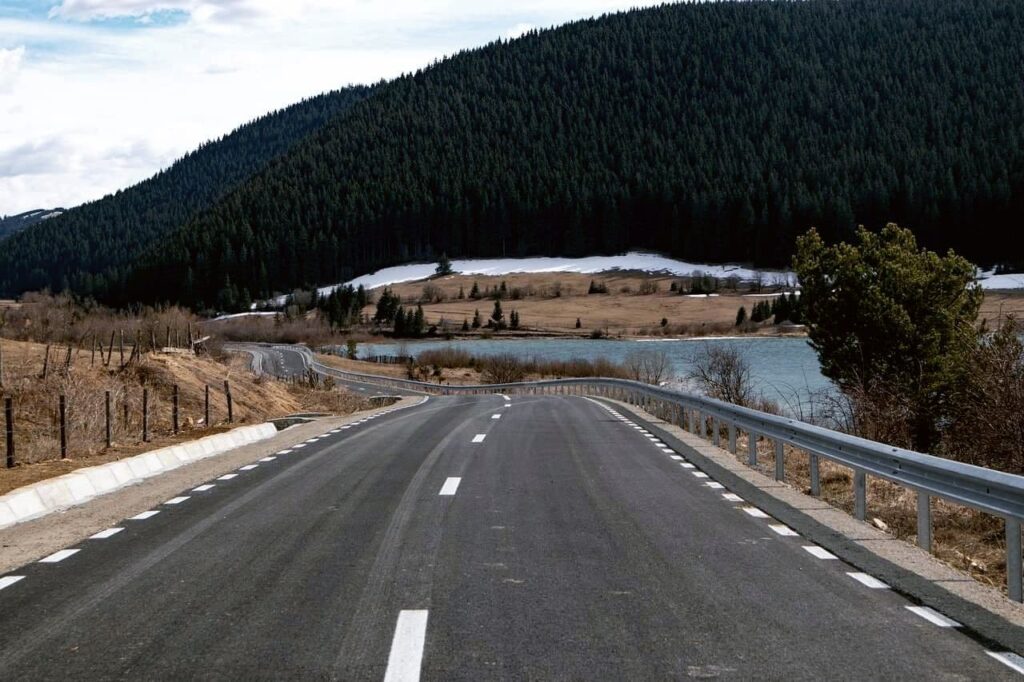
Driving in Romania with a US License
Validity of US License in Romania
If you’re an American tourist eager to explore Romania’s winding roads, you might be wondering, can I drive in Romania with a US license? The answer is yes, but with certain stipulations. A US driver’s license is valid in Romania for stays of up to 90 days. During this period, American citizens can legally drive using their valid US driver’s license without requiring an International Driving Permit (IDP).
Additional Documentation
However, it’s crucial to remember that carrying an IDP alongside your US license is highly recommended. The IDP is an official document that effectively ‘translates’ your US license into a format that’s understood and accepted in many foreign countries, including Romania. Moreover, it’s worth noting that some car rental companies may ask for it as an extra layer of validation.
Potential Issues
One of the potential issues you might face while driving in Romania with a US license is the language barrier. Romanian traffic police might not be fluent in English, and your US license might be challenging for them to interpret without an accompanying IDP. So, to avoid unnecessary complications, it’s advisable to obtain an IDP before your Romanian road trip.
Also, remember to carry your passport or a valid ID, vehicle registration documents, and proof of insurance whenever you’re driving. In the unfortunate event of a traffic stop or accident, these documents will be immediately required.
Driving in Romania with a Foreign License
Validity of Foreign Licenses in Romania
Romania welcomes tourists from all around the globe, many of whom may choose to explore its diverse landscapes by car. If you’re one such traveler holding a non-US foreign license, understanding the rules for driving in Romania becomes essential.
For European Union citizens, it’s straightforward. If you hold a valid EU driving license, you’re allowed to drive in Romania without any additional documents or permits. Your EU license is valid throughout the entire territory of Romania, for the full duration of your stay.
Countries with Bilateral Agreements
But what about non-EU foreign licenses? Romania has bilateral agreements with several countries, allowing their citizens to drive with their national license. Countries like Australia, South Korea, Canada, and South Africa are part of this list. However, just like with the US license, it’s advisable to have an International Driving Permit alongside your national license for ease of interpretation by Romanian authorities.
Process for Other Foreign Licenses
For countries without such agreements, the process becomes a bit more complicated. If you plan on staying in Romania for more than 90 days, you need to exchange your foreign license for a Romanian one or apply for a Romanian driving license. This involves a theoretical exam and a practical driving test.
Practical Points to Remember
Regardless of the type of license you have, remember to carry all relevant documents whenever you hit the road in Romania. This includes your driving license, passport or ID, vehicle registration document, and proof of insurance. Romanian traffic police are known to carry out routine document checks, so having everything at hand will save you from unnecessary hassles.
Understanding the International Driving Permit in Romania
What is an International Driving Permit (IDP)?
An International Driving Permit (IDP) is an official document that validates your domestic driver’s license in foreign countries. Essentially, it’s a ‘translation’ of your license into ten languages, providing relevant authorities with vital information in a universally recognized format.
Importance of IDP in Romania
While Romania permits tourists to drive with their foreign licenses, having an IDP simplifies the process, especially during traffic police checks or in case of accidents. It eases the language barrier and aids in quick and clear interpretation of your license by Romanian authorities. Although not a legal requirement for short stays, the IDP, paired with your national license, adds an extra layer of validation that’s particularly valuable in unforeseen circumstances.
Obtaining an International Driving Permit
If you’re considering driving in Romania, you can obtain an IDP in your home country before your departure. In the United States, for instance, the IDP can be acquired from the American Automobile Association (AAA) or the American Automobile Touring Alliance (AATA). The application process typically involves filling a form, providing two passport-sized photos, a copy of your valid driver’s license, and paying a nominal fee. It’s crucial to remember that the IDP cannot be issued in Romania if you’re a foreign visitor, so it’s required to obtain it beforehand.
Validity of IDP
An IDP is valid for one year from the date of issue. However, your IDP cannot be used in place of a driver’s license — it should always accompany your valid national driving license.
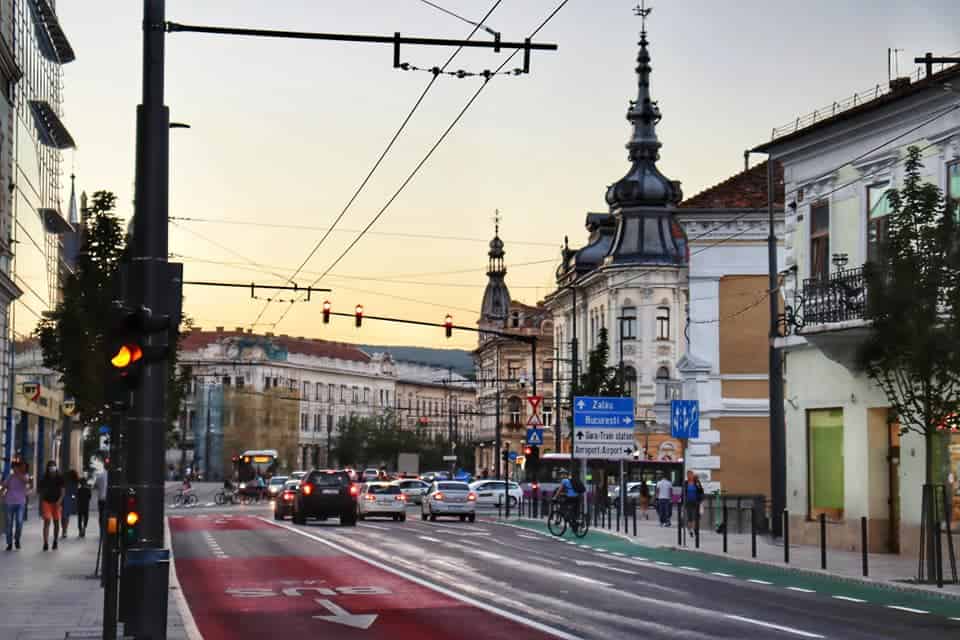
Driving Rules in Romania: What You Should Know
General Traffic Rules
Driving in Romania involves familiarizing yourself with some key traffic rules. Like most of Europe, driving is on the right side of the road, and overtaking is on the left (though you may see reckless local drivers overtaking on the right). Seatbelts are mandatory for passengers in the front seat, but not the back. Using a mobile phone while driving is illegal unless you’re using a hands-free system.
Use your blinker when passing a cyclist, when entering and exiting a roundabout, or when passing a car that is pulled over. You also need to use your blinker when overtaking a vehicle, and use it again to get back in your lane. Use it for everything!
Understanding Romanian Road Signs
Romanian road signs follow international standards, making them easy to comprehend even for foreign drivers. However, it’s wise to familiarize yourself with all the common signs before you hit the road. Also, be aware that additional local signs might be in Romanian language only.
One of the most important Romanian road signs you’ll need to familiarize yourself with is the ‘right of way’ or ‘priority’ sign. Particularly with five-way intersections, these signs still confuse me. I avoid driving due to a five-way intersection by my house for this very reason. The question of who has priority at an intersection does not conform to US logic, at all.
Speed Limits
In Romania, speed limits are generally as follows: 50km/h in built-up areas, 90km/h outside built-up areas, 100km/h on expressways, and 130km/h on motorways. However, these limits may vary, so always pay attention to road signs. You WILL be pulled over for speeding.
Parking Rules
In most Romanian cities, parking is allowed on the right side of the street where traffic moves in two directions and on both sides where traffic is one-way. However, in larger cities like Bucharest, paid parking zones are prevalent.
In Cluj-Napoca, parking is a free-for-all. Much to the dismay of mothers throughout the city, cars consistently park on the sidewalks, leaving no room for baby strollers – don’t do this.
If you park and return to your car to find the windshield wipers up, you’ve made someone angry. Don’t park there/that way again.
Driving Etiquette in Romania
Romanians are known for their passionate driving. Patience and alertness are your best companions on Romanian roads. Also, expect aggressive drivers, especially in city traffic. They may not always follow the rules, so be prepared for sudden lane changes or unexpected turns.
In Romania, it’s customary to leave your phone number on the dash of your car in case you need to move the vehicle. So, if you’re running into a store quickly or need to make a fast stop, it’s not terribly wrong to park your car blocking someone’s driveway or in another person’s parking spot, provided you leave your phone number visible.
If someone lets you pass, it’s customary to thank them by briefly turning on your hazards or giving a wave.
Best Driving Roads in Romania
Romania is blessed with some incredible driving roads, each offering its unique charm and challenges. From the stunning mountain passes of the Transfagarasan and Transalpina to the tranquil river views along the Danube en route to the Danube Delta, and the dramatic Bicaz Gorges, there’s something for every driving enthusiast. Add the flavorful journey through Dealu Mare’s vineyards, and you’ve got a collection of unforgettable road trips. So, grab your keys, and get ready to explore Romania’s best driving roads.
The Transfagarasan Highway
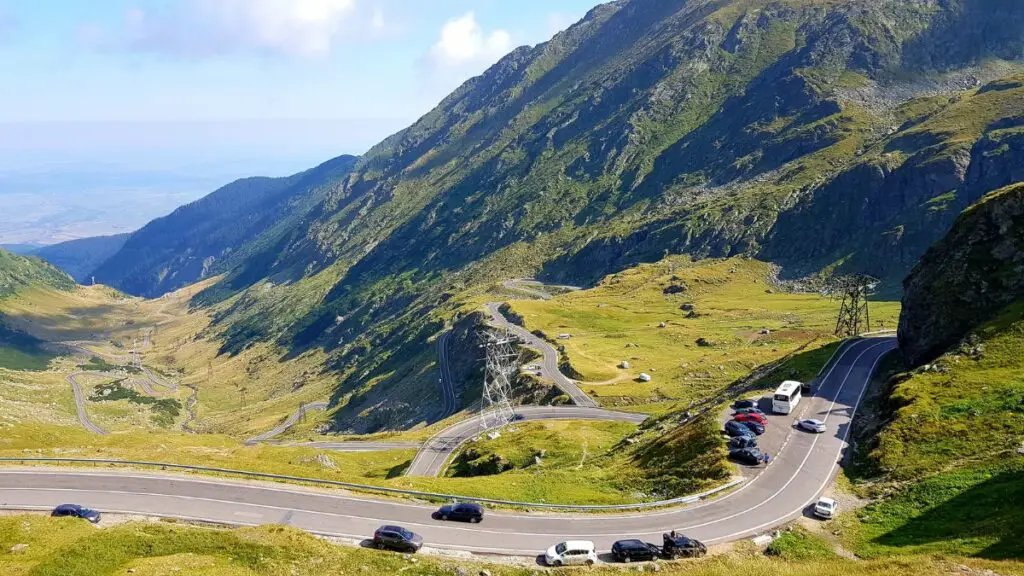
Winding through the breathtaking landscapes of the Fagaras Mountains, the Transfagarasan Highway is a testament to Romania’s natural beauty. This road stretches over 90 kilometers and reaches an altitude of 2,042 meters, making it the second-highest paved road in the country.
The Transfagarasan, also known as DN7C, connects the historic regions of Transylvania and Wallachia. While it was originally built for strategic military purposes in the 1970s, today it’s a major tourist attraction known for its stunning views, sharp hairpin turns, and steep gradients.
Driving on the Transfagarasan is a thrilling experience as the road winds and curls dramatically through the mountains. As you ascend, you’ll be greeted by vistas of serene lakes, towering peaks, and lush valleys. Halfway through, you can stop at the Bâlea Lake, a glacial lake offering scenic views and hosting a unique Ice Hotel during winters.
Remember, the Transfagarasan Highway is only open from July to October due to winter conditions, so plan your trip accordingly.
The Transalpina Road
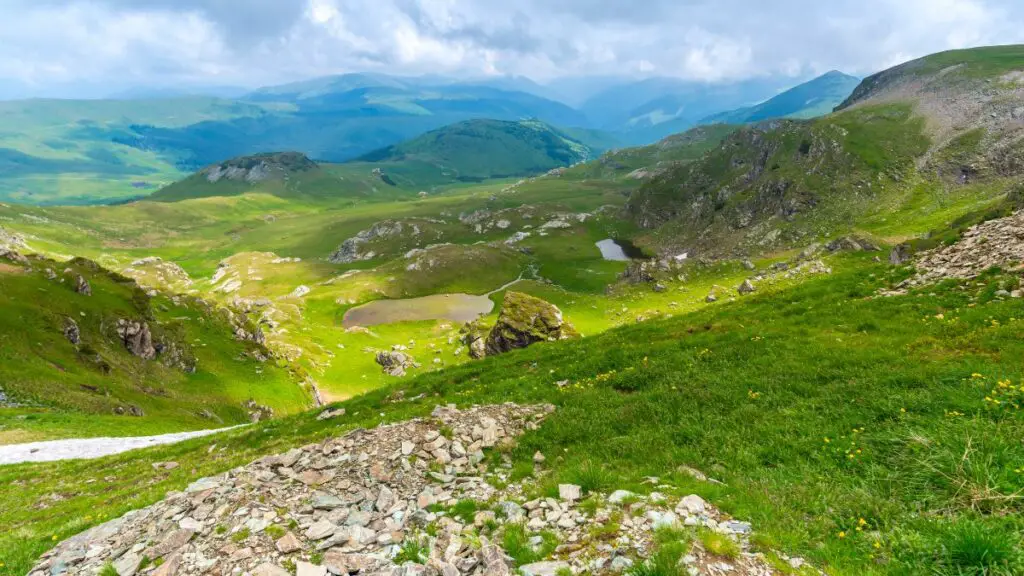
Transalpina, also known as DN67C, is the highest road in Romania, reaching an altitude of 2,145 meters. The road is a historic one, with roots tracing back to Roman times. It stretches over 140 kilometers and offers some of the most stunning views in the country.
As you drive on the Transalpina, you’ll travel through the heart of the Parâng Mountains, part of the Southern Carpathians. The landscapes here are truly enchanting, ranging from high peaks and deep valleys to serene mountain lakes and dense forests. It’s a quiet, peaceful journey, with the road often enveloped by mist, adding a touch of mystique.
Like the Transfagarasan, the Transalpina is also closed during winter, so it’s best to visit between June and October.
Danube River Drive
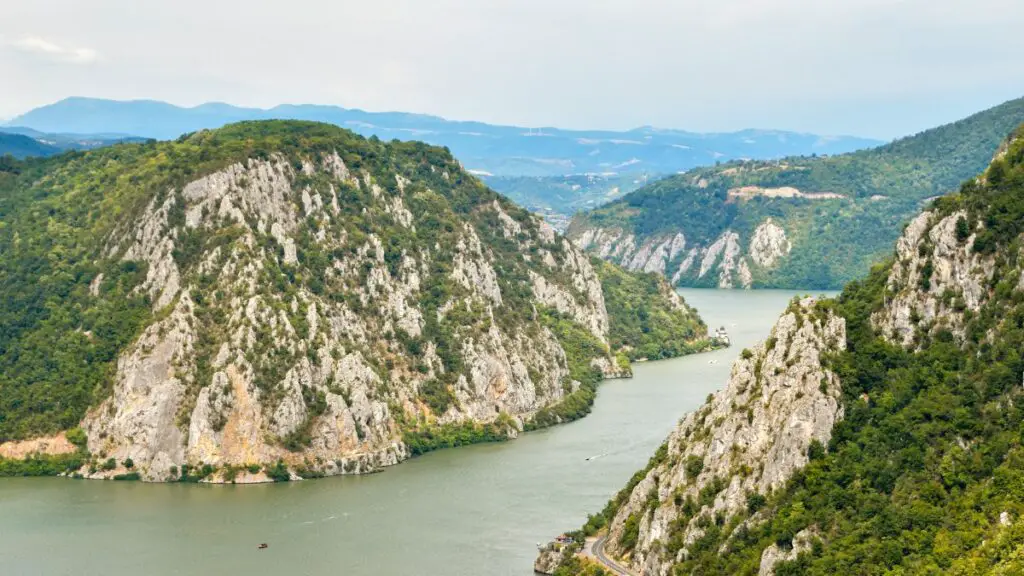
A drive along the Danube River offers a different yet equally enthralling experience. The Danube, Europe’s second-longest river, flows through ten countries, including Romania. The Romanian segment of the river, which forms the border with Serbia, Bulgaria, and Ukraine, is particularly scenic.
The route takes you through the beautiful Danube Delta, one of the largest and best-preserved deltas in Europe. It’s a UNESCO World Heritage site and a biosphere reserve, known for its unique ecosystems and rich biodiversity.
Driving along the Danube also lets you explore quaint riverside villages, stunning gorges, and historical sites like the ancient fortress of Dinogetia and the imposing Iron Gates hydroelectric plant.
Wine Route in Dealu Mare
Romania’s wine culture dates back over 4,000 years, making it one of the oldest wine-producing regions in the world. The Dealu Mare region, in particular, is often called the “Tuscany of Romania” for its perfect wine-growing conditions and high-quality production.
The Wine Route in Dealu Mare takes you through rolling vineyards, where you can explore various vineyards, sample local wines, and learn about the winemaking process. You’ll also get to experience traditional Romanian hospitality and cuisine, making the journey even more rewarding.
The Bicaz Gorges
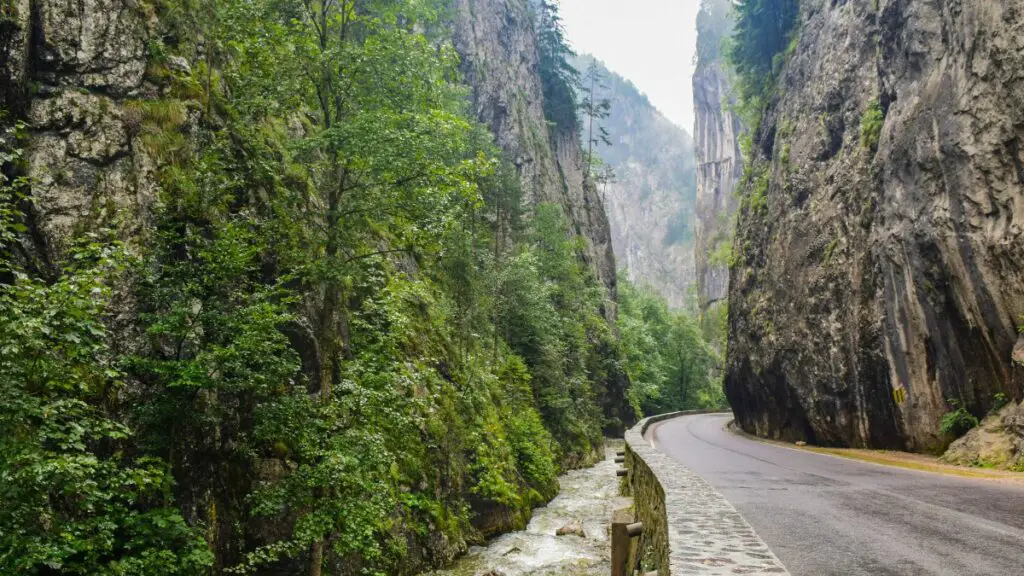
Driving through the Bicaz Gorges, located in the north-eastern part of the country, feels like venturing into a different world. This 8-kilometer long road stretches through a canyon and is part of the larger DN12C road, which connects the historical regions of Transylvania and Moldova.
The Bicaz Gorges road is wedged between towering limestone rocks, creating a dramatic, narrow path. The drive can be quite challenging, with its sharp turns and narrow lanes. However, the stunning views, the sheer rock faces, and the Bicaz River running alongside the road make the journey an unforgettable one.
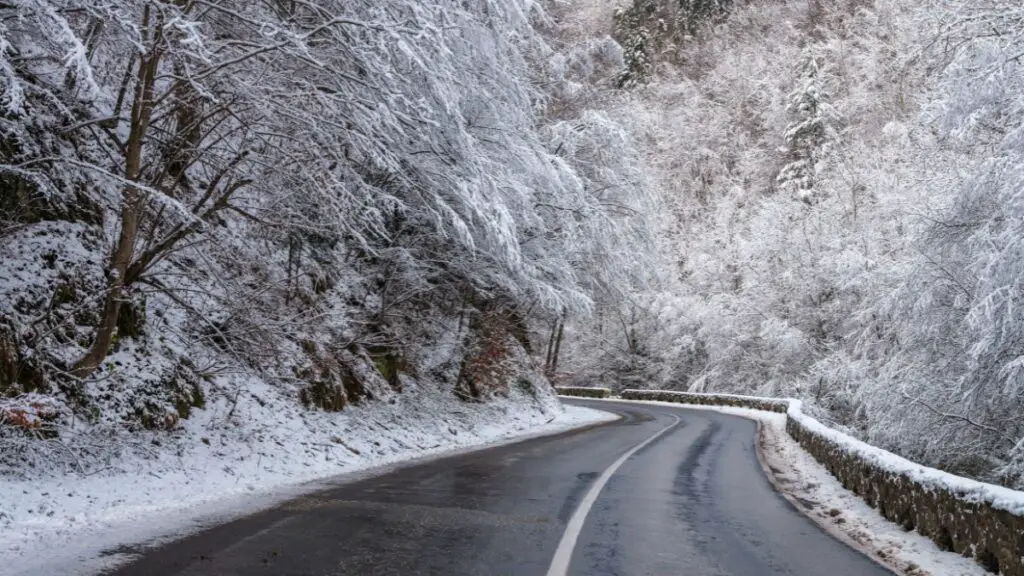
Driving in Romania in Winter: What to Expect
Winter Conditions on Romanian Roads
Winter in Romania can be quite harsh, especially in mountainous regions, where snowfall can lead to road closures and challenging driving conditions. Roads such as the Transfagarasan and Transalpina are usually closed from October until June. However, even in other regions, one must be prepared for icy conditions and decreased visibility.
Necessary Preparations
Before setting off on a winter drive in Romania, ensure your vehicle is winter-ready. This includes having winter tires, which are mandatory in Romania from November 1st to March 31st when winter conditions are present. Carrying a snow shovel, a reflective vest, and a set of chains can also prove to be useful.
Driving Behavior and Techniques
When driving in snowy or icy conditions, slow down and maintain a safe distance from the vehicle in front of you. Be aware that braking distances can increase significantly on icy roads. Use your gears to slow down and avoid harsh braking or sharp turns, which could cause skidding.
Roadside Assistance
Winter driving in Romania might require roadside assistance, especially in severe conditions. Having a local contact number for a vulcanizare (tire repair shop) can be helpful if you encounter tire issues. Vulcanizare are typically found frequently along the roads of Romania and throughout its cities, towns, and villages.
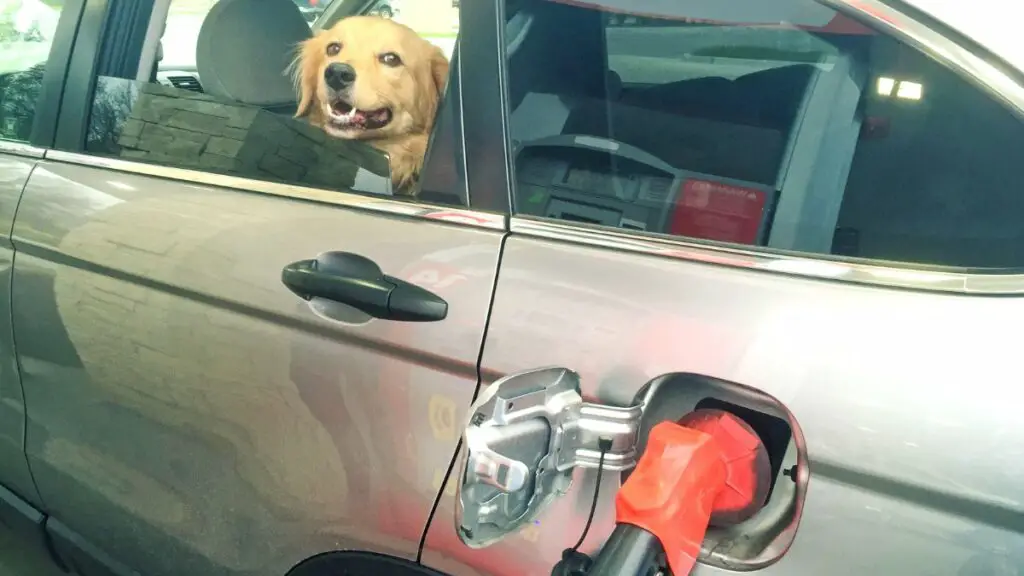
Romania Roadside Assistance and Gas Stations: What You Should Know
Roadside Assistance in Romania
When you’re driving in a foreign country, having the security of roadside assistance can offer great peace of mind. In Romania, most rental car companies offer their own roadside assistance. However, if you’re using a personal or borrowed vehicle, consider joining a Romanian automobile club that provides roadside assistance services.
Another important aspect of roadside assistance in Romania is vulcanizare, or tire repair services. Due to the varying road conditions in the country, flat tires can be a common issue. Most towns and cities will have a vulcanizare, but it’s advisable to keep the contact information of a few well-reviewed services handy. Remember, though, that while some are open 24/7, some most close for the night.
Getting Gas in Romania
Fueling your vehicle in Romania is straightforward, but there are a few things to remember. In Romania, you pump first and then pay. This applies whether you’re using cash or a card. It’s also worth noting that while diesel and gasoline are widely available, not all gas stations carry premium fuels. So, if your vehicle requires a specific type of fuel, plan your refueling stops accordingly.
Romanian gas stations also serve as mini grocery stores, and most have bathrooms available for customer use. However, they usually don’t have ATMs. Therefore, if you need cash, it’s best to withdraw it from the city before your road trip.
Road Rage and Driving Safety in Romania
Despite the challenges, driving in Romania can be an exciting experience with proper understanding and precautions. While the cultural norms and road conditions might pose certain risks, maintaining patience, respecting the rules, and prioritizing safety over speed can significantly enhance your driving experience.
Understanding Road Rage in Romania
Road rage in Romania is a concerning issue, consistently pushing the country to the top of European road safety and driving behavior studies for all the wrong reasons. The manifestation of road rage can take various forms, from aggressive driving and excessive honking to verbal confrontations and, in some cases (often depicted on national news), physical altercations.
Reports from the European Commission have repeatedly pointed out that Romania has one of the highest rates of road fatalities in Europe. Behind some of these statistics are often tales of road rage that escalated quickly, making it essential for anyone planning to drive in Romania to understand this issue.
Reasons for Road Rage
The reasons for road rage in Romania are varied, with contributing factors ranging from infrastructure to cultural norms. One of the key reasons lies in the country’s road infrastructure. With an inadequate highway system, a significant amount of traffic, including large trucks, is forced onto smaller, village roads. These roads are not built to accommodate heavy traffic, resulting in extensive backups and congestion.
This frustration is often exacerbated by high-speed driving and reckless overtaking, with drivers attempting to bypass traffic without considering the safety implications. Furthermore, lax enforcement of traffic rules and a lack of comprehensive driver education (looking at you, Alba county) contribute to a culture of impatient and aggressive driving.
Safety Precautions
For foreign drivers, understanding the realities of road rage in Romania is the first step towards ensuring a safe driving experience. Patience becomes a virtue when driving in Romania. Keeping calm, avoiding confrontation, and strictly adhering to local traffic rules are the best ways to navigate Romanian roads.
Being aware of the driving culture is also beneficial. For instance, Romanians commonly use their car horns, often to communicate or vent frustration. While this may be startling at first, understanding this as part of the driving culture can make the experience less stressful.
If confronted by an aggressive driver, the best course of action is non-engagement. Avoid making eye contact or responding with gestures, and definitely refrain from retaliating with aggressive driving of your own. Remember, your primary goal should always be to reach your destination safely, not to win a dispute on the road.
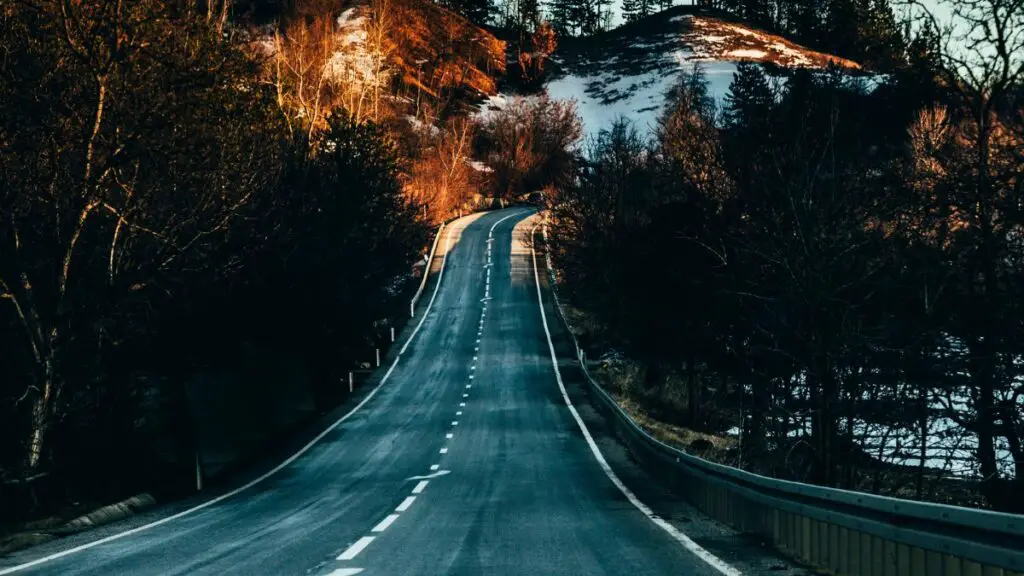
Driving in Romania as a Tourist: Insider Tips
Whether you’re captivated by the organized chaos of Bucharest, the medieval allure of Transylvania, or the stunning landscapes of the Carpathians, driving is a fantastic way to experience Romania’s rich tapestry. However, as a tourist, there are a few things to keep in mind:
Car Rental
There are many car rental services in Romania, including major international companies and local providers. Remember to check if the rental price includes mandatory liability insurance. If you’re planning on visiting in winter and driving through mountainous areas, consider renting a car with winter tires or chains.
Most, if not all, vehicle rentals require a deposit ranging from three to six hundred euros (sometimes more).
Understand Local Customs
Romanian drivers are known to be passionate and sometimes unpredictable. You’ll often see drivers flashing their lights to signal that they’re about to overtake. Also, horn honking is more common and can mean a variety of things, from a friendly reminder to a signal of annoyance.
Right of Way
Be sure to look at the sign to determine who has right of way (priority) at an intersection. Especially if you’re American, priority is not always given to the lane you’d logically assume.
Paid Parking Lots
In cities that offer paid parking lots, be sure to pay for your ticket at the booth before driving to the exit. After payment, you only have 15 minutes to exit the lot. There have been many times where I’ve paid and gone to leave, only to find that the exit was blocked by someone who didn’t know they had to pay first – resulting in me having to pay twice!
Emergency Contacts
Finally, keep emergency contact numbers at hand. The general emergency number in Romania is 112. For roadside assistance, you can reach the Automobile Club of Romania (ACR) at +40 21 222 2222.
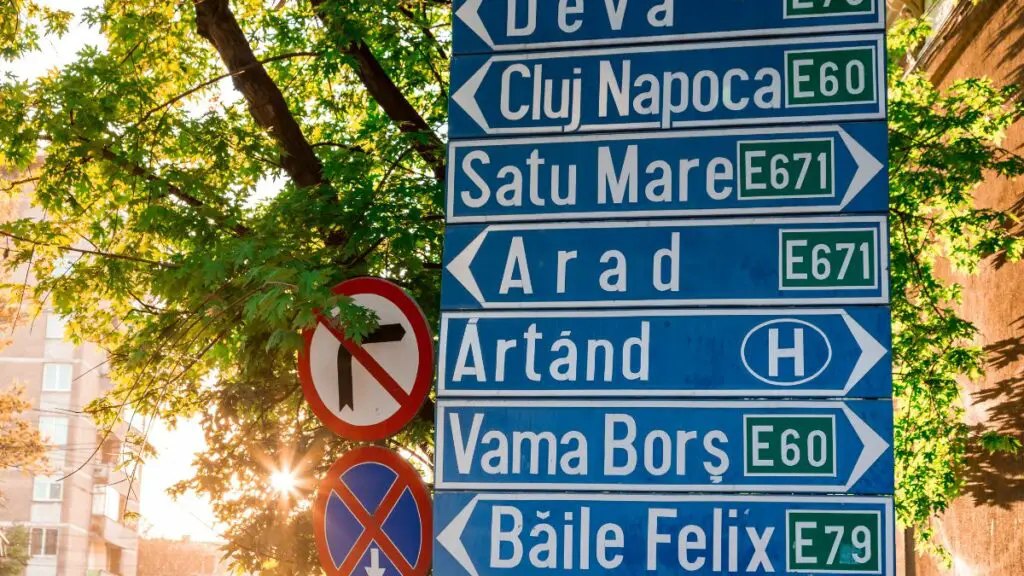
Embarking on a Romanian Road Adventure
After navigating through the unique challenges and abundant rewards of driving in Romania, one thing is clear: the journey is as mesmerizing as the destination. From the majestic heights of the Transfagarasan Highway to the serene banks of the Danube River, driving in Romania offers experiences that are nothing short of magical.
Understanding local traffic rules, being prepared for diverse driving conditions, and respecting local driving customs are key to a safe and enjoyable road trip. While the country’s road safety issues and instances of road rage might seem daunting, a patient and defensive driving approach can help mitigate these risks.
Being aware of roadside services and knowing how to access assistance during emergencies adds an extra layer of security to your trip. Plus, insights into unique aspects like refueling norms and car rental tips can make your Romanian driving experience smoother.
In the end, every bend in the road, every scenic overlook, and every unique cultural encounter makes driving in Romania an unforgettable adventure. So buckle up, stay safe, and let the charm of Romania guide you along its fascinating roads.
Remember, the road less traveled often leads to the most extraordinary experiences. Romania’s roads are waiting for you.

